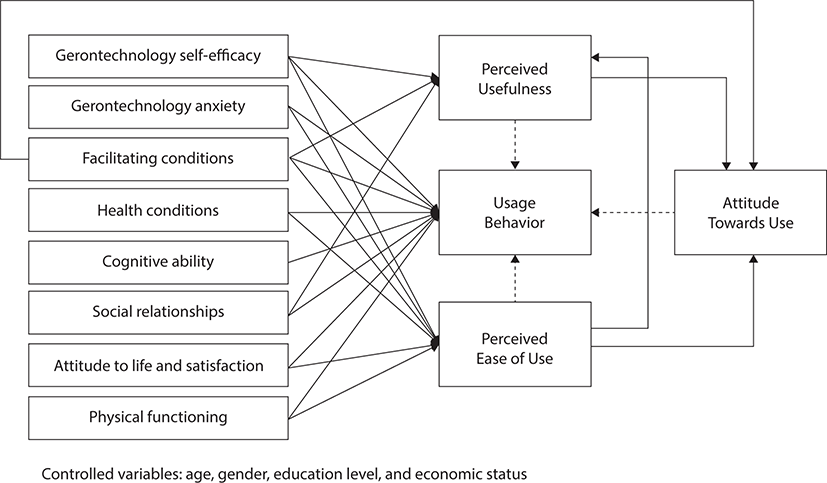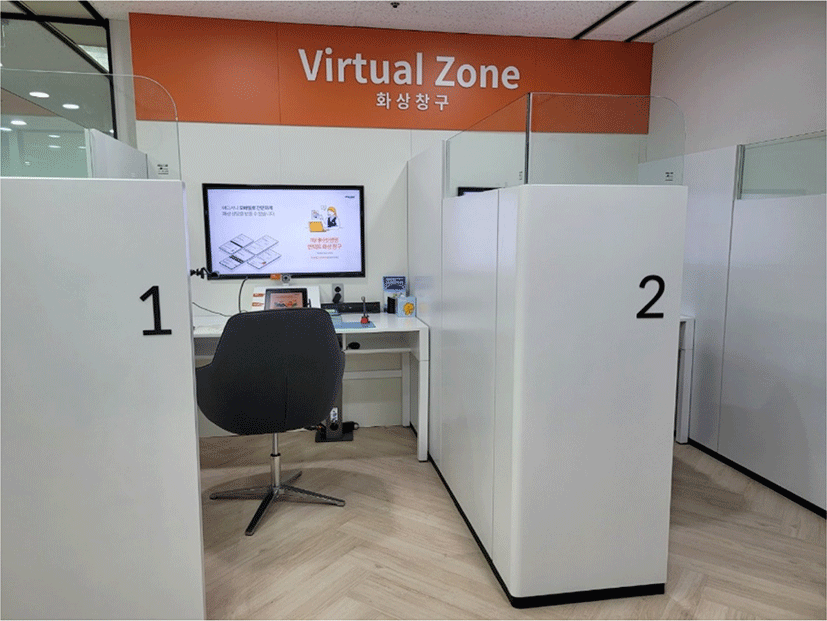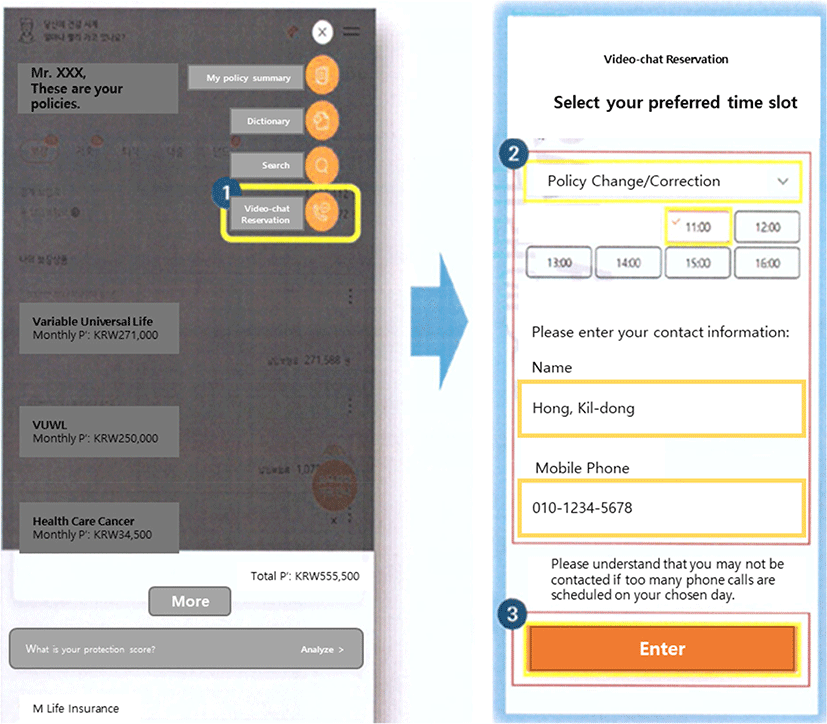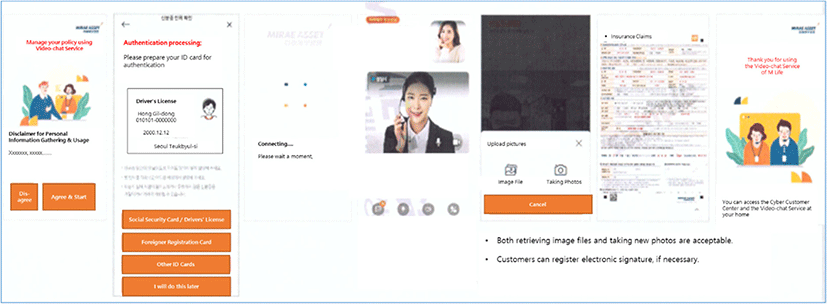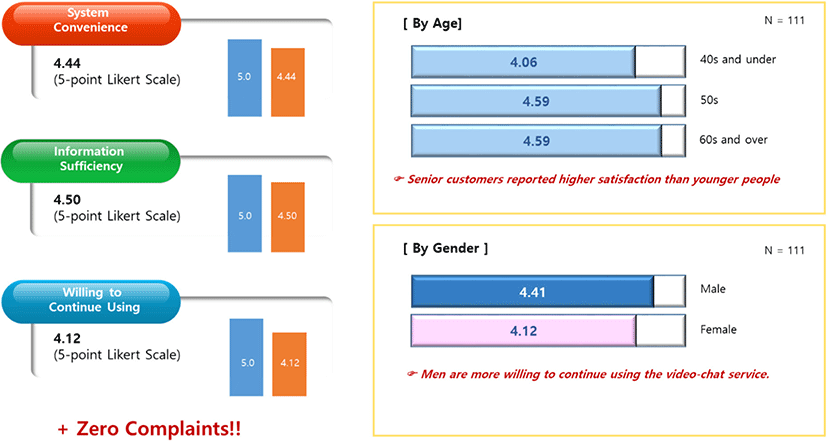Introduction
In the past two and a half years, the world has quickly entered an unprecedented phase. The novel coronavirus that appeared in December 2019 quickly spread around the world, becoming a pandemic and profoundly impacting human life. In the early days of the pandemic, when no vaccines or treatments were available, essentially the only way to protect people from this strange invader was to reduce exposure. Face covering, social distancing, and other unfamiliar methods became familiar, and working from home and video conferencing became commonplace. Using digital technology, companies have introduced new processes and services that alleviate the risk from the virus, but inherently decrease social interaction. Although digital transformation had been in progress before the coronavirus disease 2019 (COVID-19) outbreak, the pandemic is believed to have sped up the change by encouraging firms to adopt digital technologies on a wider scale and under time pressure (Priyono, Moin, & Putri, 2020). These advances in digital technology have brought convenience to consumers and allowed businesses to maintain a certain level of activity, especially during lockdowns (Soto-Acosta, 2020). Currently, COVID-19 is still a major problem, but it is unlikely that life will ever return to the pre-COVID-19 state.
In Korea, a factor materially impacting society along with COVID-19 is population aging. In fact, due to the development of the economy and medical technology, population aging is a worldwide phenomenon (Jeon & Chung, 2015). However, South Korea has one of the fastest rates of aging around the globe. The population already became an aging society (characterized by an elderly population of more than 7%) in 2000 and is projected to become a super-aged society (with an elderly population of more than 20%) in 2026 (Hong, 2013). Aside from major social problems such as a decrease in the working-age population and an increase in welfare demand for the elderly, this demographic change may delay digital transformation. Although many older people view digital technology positively, they are less enthusiastic about adopting new technologies themselves (Kuo, Chen, & Hsu, 2012). Due to the aging of the visual and auditory senses as well as cognitive and psychological changes, elderly people exhibit different receptivity to digital technology than younger individuals (Farage, Miller, Ajayi, & Hutchins, 2012). In a world undergoing digitalization that is further accelerated by COVID-19, elderly consumers, whose demographic share has been increasing, have difficulty enjoying digital technology, and the digital divide is emerging as a social problem.
The development of digital technology has spawned BigTech companies such as Amazon, Apple, Facebook, Google, and Alibaba, and the recent entry of BigTech companies into the financial sector has been a notable development. Starting primarily with payment services, BigTech firms have expanded their business in the financial sector to credit, insurance, savings, and investment products (Frost, Gambacorta, Huang, Shin, & Zbinden, 2019). Adrian (2021) argued that BigTech firms leverage three components: customer data that they already possess, advanced analytics to correctly understand customer needs, and strong network effects. As such, BigTech companies are rapidly penetrating the financial market. Another competitive edge of BigTech firms is lower unit cost. Due to their digital nature, BigTech companies provide services at almost zero marginal cost (Frost et al., 2019). However, traditional financial companies have higher unit costs than companies in other industries. Over the past few decades, financial institutions have reduced unit costs only marginally, while other industries have done so sharply (Philippon, 2015). This is becoming a major challenge for existing financial institutions, requiring innovation in service through the rapid adoption of technology.
In this article, we examine the case of a Korean insurance company that introduced video chat-based customer service to alleviate the digital inclusion concerns of senior customers. In the irresistible wave of digitalization accelerated by COVID-19, the digital inclusion of seniors must be addressed as their demographic proportion increases. To do so, we adopted the senior technology acceptance model (STAM) theory to present factors associated with success and suggestions for the development of video chat-based customer service.
Case Description
Adapted from the existing theory of reasoned action (Fishbein & Ajzen, 1977), the technology acceptance model (TAM) (Davis, 1989) has been widely used to explain causal relationships with an individual’s acceptance and usage of new technologies. According to the TAM, perceived usefulness (PU) and perceived ease of use (PEOU) are established based on the influence of various exogenous variables and form a causal relationship with the user’s attitude; this influences the intention to use, which affects actual use (Shin, Yoon, Kim, & Kim, 2020). Later, Venkatesh, Morris, Davis, and Davis (2003) formulated the unified theory of acceptance and use of technology (UTAUT) by reviewing eight user acceptance models to create the UTAUT, which was regarded as having more predictive power than the existing models. Under the UTAUT, performance expectancy, effort expectancy, and social influence are direct determinants of the intention of use, while behavioral intention and facilitating conditions are direct determinants of usage behavior.
Although the TAM and UTAUT have exhibited consistency and validity and thus have been used to explain individual technology usage behavior, neither considers the unique characteristics, abilities, and limitations of older people. Unlike younger individuals, the elderly may struggle to use new information technologies due to the gradual decline in physical function and intellectual capability that occurs with aging (Kuo et al., 2012). To reflect these unique characteristics of the elderly, Chen and Chan (2014) proposed the STAM. While the TAM emphasizes the role of attrition factors such as usefulness and ease of use, the STAM explains that in addition to the variables in the TAM, aging-related physical, psychological, cognitive, and social characteristics affect older people’s interactions with technology. As illustrated in Figure 1, the STAM was formulated by adding age-related constructs (health conditions, cognitive ability, social relationships, attitude regarding life and satisfaction, and physical functioning) based on existing TAM and UTAUT factors such as PU, PEOU, attitude towards use, self-efficacy, anxiety, and facilitating conditions. The STAM predicts technology acceptance and usage behavior among seniors. According to this model, personal characteristics (age, education, self-efficacy and anxiety, and health deficiencies) and environmental supports (accessibility, assistance, and guidance) are more important than existing attitudinal factors (PU and PEOU) in predicting older adults’ technology acceptance and usage behaviors.
M Life Insurance Company is a Korean life insurance company affiliated with M Financial Group. It was founded as a small local life insurance company in 1988, but since its acquisition by M Financial Group in 2005, its business has continued to grow with a ‘two-track strategy’ focused on unit-linked products and protection products. In line with the group’s business philosophy, the company values innovation and investment, and its leaders intend to quickly adapt the company’s operations and customer service to digital technologies to retain a leading edge in the marketplace. In March 2021, M Life spun off its sales organization in a first in the Korean insurance industry, a step taken to reinforce sales and service competitiveness in the market. Like other financial institutions in the Korean market, M Life faces social changes arising from COVID-19 and population aging, as well as competition with BigTech companies that requires substantially lowering unit cost and providing innovative products and services to survive.
Insurance customers in Korea are also experiencing rapid changes due to the coronavirus and the aging population. The life insurance industry is no exception to the COVID-19-facilitated preference for non-face-to-face transactions, and young individuals who are digital technology-savvy prefer to maintain their insurance contracts in that way. Young customers tend to access cyber customer centers via personal computers (PCs) or mobile phones to file insurance claims, contract changes, and fund changes on their own. In contrast, elderly customers who are less adept at manipulating digital devices often find it difficult and inconvenient to handle transactions through an online customer center via PCs or mobile phones. In particular, they seem to struggle with the authentication process and multi-window manipulation on their mobile phones. In addition, as most senior customers are retirees, their access to faxes or scanners is often limited. These elements lead many older customers to express a preference to visit a customer service location with their documents.
Under these circumstances, M Life decided to close customer walk-in centers, which had provided face-to-face service for incoming customers, in six major cities. The company renovated the locations to establish ‘Digital Lounges’ and began providing video chat-based customer service. Two video counseling booths were installed in each Digital Lounge to allow walk-in customers and company customer service representatives to communicate in real time while looking at a video monitor. In the existing customer walk-in center system, five employees are assigned to each center to serve incoming customers. The average number of incoming customers is only about 10 per day, but because the customers are concentrated at certain time periods, the company must allocate human resources accordingly, substantially reducing manpower productivity. On the contrary, in the video chat customer service, employees working at a centralized location respond to customer requests on a first-come-first-served basis, allowing more customers to be served with fewer employees. The video chat customer service is available not only at the video booth in the Digital Lounge but also on mobile phones, so customers can receive the desired service through a mobile phone at home, work, or even a coffee shop without visiting the Digital Lounge.
The Digital Lounge is approximately 120 square meters and consists of four zones:
-
The “Virtual Zone,” in which the video chat booth is installed
-
A “Cyber Zone” with an internet-connected PC to access the company’s website
-
A “Waiting Zone” for customers to wait and relax
-
An information desk with a staff member for assistance
Two booths were installed for video chat customer service in the Virtual Zone. As shown in Figure 2, each booth is a half-open workstation with a 42-inch monitor, a book scanner, a touchpad, a seal scanner, a pin microphone, and a speaker. Customers can communicate in real time with a customer service representative through the monitor to manage their insurance contracts. They need only sit at the desk in the booth and press the “start” button displayed on the touchpad. All transaction processes are guided by the customer service representative, who appears on the monitor. While looking at the same screen as the employee, a customer can simply follow the staff member’s guidance and does not need to operate a button or search for a separate menu. Documents brought by the customer must be placed on the book scanner, and the service representative manipulates them remotely to scan. As the company has deployed a paperless working environment, all applications are electronically documented so that customers can sign electronically using the touchpad. Relevant image files of all documents and transaction results are sent to the customer’s mobile phone at the end of service. Using the PCs in the Cyber Zone, customers can access the company’s website and handle their work. As the video chat function is not provided in this case, a staff member is present at the information desk to assist when customers need help. In addition, the staff member educates customers about conducting their work through the company’s website on their own at home or in the office, without visiting the Digital Lounge. The Waiting Zone, which is designed for visitors’ rest, has a comfortable couch and table, a corner for beverages and snacks, and equipment for high-speed charging of mobile phones. A staff member is stationed at the information desk to provide guidance and assistance to walk-in customers.
Unlike the video booths in the Digital Lounges, video chat services using mobile phones are location-agnostic. Customers can complete tasks on their own on the company’s website with their mobile phones, and they also can request customer service representative assistance by reserving the video chat service when needed. As shown in Figure 3, customers need only click the reservation button and enter the service category, time, name, and contact information.
The mobile video chat service is also used at the call center. If a call center representative considers the video chat service to be more efficient for the customer (e.g., in transactions that require submission of supporting documents, such as insurance claims, policyholder changes, etc.), the representative recommends switching the call to the video chat service. Regardless of whether the video chat service was initiated by the customer or switched to upon the call representative’s recommendation, the company sends a URL to the customer’s mobile phone. When a customer clicks the link, he or she completes the consent process for the collection and use of personal information on the start screen, then is required to upload his or her identification card for authentication. When this stage is completed, a service representative appears on the mobile phone screen and guides the customer as he or she completes tasks. Various required documents are uploaded as photo files for submission. Figure 4 shows the mobile phone screen for each processing stage.
As stated earlier, according to the STAM, personal characteristics (age, education, self-efficacy and anxiety, and health conditions) and environmental supports (accessibility, assistance, and guidance) play important roles in the technology acceptance and usage behavior of the elderly. During the design of the video chat service, M Life carefully considered these factors to help senior customers more comfortably accept and continue using the technology, as follows.
Self-efficacy refers to an individual’s perceived ability to use certain technology successfully, whereas anxiety involves apprehension when the person is faced with the possibility of using the technology (Venkatesh et al., 2003). M Life’s video chat service minimizes customer manipulation requirements, with the goal of decreasing anxiety and increasing self-efficacy among the elderly. When a customer enters the booth, they need only press the start button, after which a service representative appears on the monitor and leads the customer to complete the desired tasks. The equipment and furniture in the Digital Lounge are also simple and well-designed but not overly luxurious, to eliminate elderly customers’ anxiety about breaking the equipment.
Venkatesh et al. (2003) claimed that facilitating conditions are associated with the perception of objective environmental factors that promote technology usage. In a study by Chen and Chan (2014), the researchers argued that accessibility is an indicator of facilitating conditions such as basic knowledge, available help, financial resources, and social influences. M Life’s video chat service was created with the accessibility of elderly customers in mind. To prevent confusion among visiting customers, each Digital Lounge housing the video chat booth was built at the same location as the existing customer walk-in center. Furthermore, to drastically improve customer accessibility, mobile video chat services were provided to allow customers to receive services regardless of time and place.
One of the most important facilitating conditions in the STAM is assistance and guidance. Given the rapid aging of society, M Life considered assistance and guidance important in the design of video chat services. In the Digital Lounge, an employee is present at the information desk to promptly help incoming customers. When a customer enters, the staff member asks what kind of service the customer wants and guides the customer to the Virtual Zone or Cyber Zone accordingly. If the customer has many documents to scan, the employee scans them with a high-speed scanner to ease the customer’s burden. The staff member also educates customers who have completed their desired tasks about using the mobile video chat service so that they can conveniently receive the same service without visiting the Digital Lounge in the future. During the video chat service at the booth or on a mobile device, assistance and guidance are core factors of the service. Because the company’s service representatives explain important points and guide customer actions, customers can complete their work without confusion.
Older people may struggle to accept and use technologies due to the gradual decline in physical function and cognitive capabilities (Kuo et al., 2012). In the aging process, an individual’s physical function, especially visual and auditory function, gradually decreases (Jeon & Chung, 2015). In the Digital Lounge, the video chat booth is equipped with a large monitor, so even customers with poor eyesight can easily manage their tasks. In addition, M Life placed volume-adjustable speakers and magnifying glasses in the booth for senior customers’ convenience. The floor of the Digital Lounge is completely flat to avoid hindering wheelchair entry. The video chat booth also has a sufficiently large entrance for wheelchairs to enter.
The company conducted a customer survey twice to measure the satisfaction of customers who had experienced the video chat service. In the first survey, 111 customers who had used the video chat booth answered. They were asked whether the system was convenient, whether the information was sufficient, and whether they were willing to use the video chat service again in the future. As shown in Figure 5, the results indicated a high degree of satisfaction, at 4 or above out of 5. Notably, customers in their 50s and 60s indicated higher satisfaction than those younger than 40 years, and men reported higher satisfaction than women. The second survey was conducted among 62 customers who had experienced the video chat service, with 74% agreeing that the service was easy and convenient. Furthermore, 90% of the respondents said they received accurate and sufficient information from the video chat service representatives. Customer preference rates for using mobile video chat versus visiting the Digital Lounge were 55% and 45%, respectively. Overall, customers were satisfied with the video chat service, and the company received no customer complaints related to the service.
Discussion
M Life’s video chat service has brought several benefits to customers and the company. First, customers can safely engage in non-face-to-face transactions without worrying about viral infection even as the pandemic continues. The mobile video chat service also helps customers complete their insurance-related business regardless of location, saving customers time relative to visiting the company’s branches or customer plaza. In addition, the video chat service system minimizes menu selection and button manipulation, so it can be easily used by elderly customers. In particular, the authentication process, with which many senior customers struggle, is relatively simple in this system. This allows many older customers to complete their desired tasks through the video chat service, yielding a higher customer satisfaction rate among that customer group.
The company, too, benefitted from the introduction of the video chat customer service. First, M Life enjoyed improved productivity in terms of human resources. In the past, each customer plaza had five employees serving an average of five to 10 incoming customers a day per customer walk-in center. As customers’ visits are concentrated at certain time slots, the number of employees is set to meet the maximum number of visiting customers. However, after the introduction of the video chat service, a service representative could serve 8 to 10 customers throughout the country. This is possible because the video chat service is not limited to the physical location of the employees. This also allows those employees to work from home, improving employee satisfaction. In addition, the Digital Lounge neither occupies much space nor requires a high installation cost, so it is relatively low-burden to create additional Digital Lounges as needed in the future.
In this way, a video chat service benefits both customers and companies. With regard to key factors associated with success, the factors related to personal characteristics or environmental supports appeared to play an important role in the successful introduction of the service, which aligns with the STAM. As customers who use the video chat service can simply follow the guidance of the service representative, all tasks can be completed very easily. This increases self-efficacy and decreases anxiety among senior customers. Additionally, various equipment included in consideration of the physical characteristics of senior customers (e.g., magnifying glasses, a speaker, a microphone, wheelchair-accessible booth design, etc.) assists them in their business. Above all, making the authentication process, which is the most difficult for senior customers, substantially easier than on a website or through a call center—allowing senior customers to complete the desired tasks without giving up—had the largest positive impact on customer satisfaction. Another key factor contributing to success in senior customers’ adoption of the video chat service was environmental support. Essentially, customers can complete their work by following the customer representative’s guide, but they can also receive assistance from the staff member at the information desk whenever they want. In the mobile video chat system, customers are guided by a pop-up notice at every step.
To promote the active use of this video chat customer service and thereby improve the digital inclusion of older customers, the company must increase the number of Digital Lounges, which currently exist at only six locations nationwide. Since a booth for video chat service does not require much space or a high installation cost, the financial burden on the company is not substantial. The company could also consider installing video booths in branch offices of general partner agencies or the security company of M Group. In addition, it is worth considering extending the service hours so customers can use the video chat service without time constraints. If service representatives work in shifts and properly utilize telecommuting, customers will be able to conduct insurance business much more conveniently.
Conclusion
In the wave of digitalization accelerated by the pandemic, M Life must lower unit costs to secure competitiveness against BigTech companies. M Life introduced a video chat service to improve not only efficiency but also the digital inclusion of older customers, whose demographic share is increasing. Customers can manage their insurance policies at booths in the Digital Lounge or through a mobile phone, enjoying time savings and procedural convenience. Existing theories of technology acceptance do not incorporate factors such as personal characteristics and facilitating supports, which are particularly important in the technology acceptance of elderly customers. The video chat-based customer service system introduced by M Life is an example of providing services through communication with customers of all generations in the digital era. Although it was introduced as part of non-face-to-face customer service due to COVID-19, the video chat service is expected to become a solution to relieve the digital divide in an aging society even after the pandemic.







